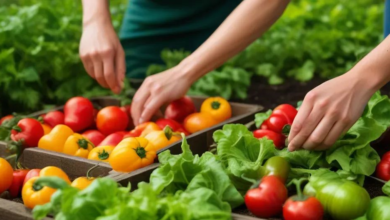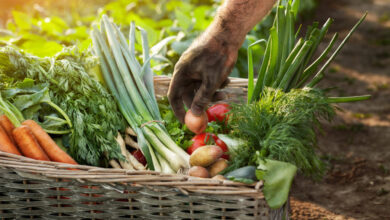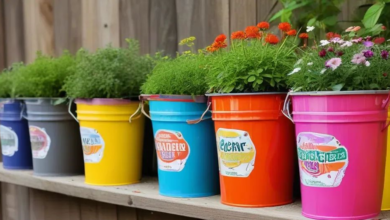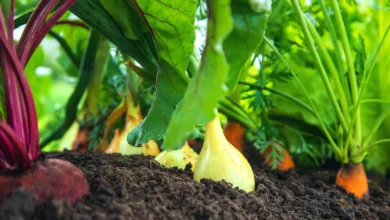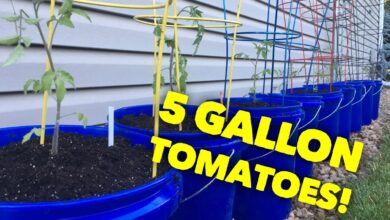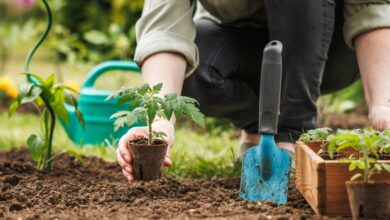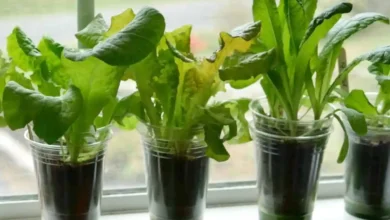How to Start a Raised Bed Vegetable Garden for Beginners in 2025
Learn how to start a raised bed vegetable garden as a beginner in 2025. Step-by-step guide covering location, soil, and growing techniques.

Starting a raised bed garden is one of the most rewarding and practical ways to grow fresh vegetables at home, regardless of your gardening experience level. Whether you live in an urban apartment with limited space or a sprawling suburban property, a raised bed vegetable garden offers flexibility, convenience, and impressive yields that traditional in-ground gardens often cannot match. In 2025, more homeowners are discovering the transformative benefits of raised bed gardening, from improved drainage and better soil quality to enhanced accessibility and reduced pest problems. Unlike conventional gardens that require you to work with whatever native soil is already in your yard—which may be clay-heavy, compacted, or nutrient-poor—a raised bed garden for beginners allows you to create the ideal growing environment from the ground up.
This comprehensive guide is specifically designed for newcomers to gardening who want to establish a successful vegetable garden without feeling overwhelmed by complex techniques or expensive equipment. Throughout this article, we’ll walk you through every essential step: selecting the perfect location that receives adequate sunlight, building or purchasing your raised bed structure, filling it with nutrient-rich soil, choosing beginner-friendly vegetables, implementing proper watering strategies, and maintaining your garden throughout the growing season. By following this roadmap, you’ll be equipped with the knowledge and confidence needed to create a thriving raised bed garden that produces an abundance of fresh, homegrown vegetables for your family table.
Why Choose Raised Bed Gardening for Your Home
Raised bed gardening has become increasingly popular among both novice and experienced gardeners for compelling reasons that directly impact your success rate and overall gardening experience. The primary advantage is improved soil control. With a raised bed garden, you fill the structure with premium-quality soil specifically formulated for vegetable growing, bypassing the challenges of native soil that may be depleted, compacted, or unsuitable for cultivation. This means your vegetables receive optimal nutrition from day one, resulting in healthier plants and larger harvests.
Better drainage is another crucial benefit, particularly for gardeners in regions with heavy rainfall or poor drainage conditions. Raised beds allow excess water to drain away efficiently, preventing root rot and fungal diseases that commonly plague vegetables growing in waterlogged traditional gardens. Additionally, raised bed vegetable gardening provides superior accessibility. Whether you have mobility challenges, back pain, or simply prefer working at a comfortable height, raised beds reduce the strain of bending and stooping. Pest management becomes significantly easier when your vegetables are elevated off the ground, creating a natural barrier against ground-dwelling pests like slugs and snails.
Furthermore, raised bed gardens extend your growing season. The elevated soil warms faster in spring and retains heat longer in autumn, allowing you to plant earlier and harvest later than your neighbors with traditional gardens. Space efficiency is another compelling reason: you can maximize productivity in compact areas, making raised bed gardening ideal for urban balconies, small yards, or patios. The visual appeal of organized, contained garden beds also adds aesthetic value to your landscape.
Selecting the Ideal Location for Your Vegetable Bed
The location you choose for your raised bed garden fundamentally determines your success or failure, making this decision one of the most critical in the entire process. Sunlight is the paramount consideration. Most vegetables require a minimum of six to eight hours of direct, unobstructed sunlight daily to grow vigorously, produce abundant fruit, and develop robust flavor. Tomatoes, peppers, eggplants, and other fruiting vegetables are especially sun-hungry, while leafy greens like lettuce, spinach, and kale can tolerate some afternoon shade in hot climates.
Scout your property at different times of day to identify areas that receive consistent, direct sunlight. Take note of how tree canopies, buildings, and structures cast shadows throughout the day and across seasons. In summer, shadows are shorter and move quickly, while in spring and fall they’re longer and more pronounced. Choose a location where your raised bed vegetable garden will receive the maximum available sunlight, ideally in the morning so dew can dry quickly and reduce fungal disease risk.
Accessibility is your secondary consideration. Your vegetable bed should be positioned where you can easily access it for regular watering, weeding, harvesting, and maintenance without having to navigate through difficult terrain or around obstacles. A location near your home or water source significantly improves consistency in care. Additionally, ensure good air circulation around your raised bed garden—air movement helps prevent disease while also making the space more pleasant for working.
Avoid low-lying areas where water accumulates or where surrounding trees continuously drop debris into your bed. Similarly, steer clear of locations too close to septic systems or drainage fields. Finally, consider proximity to your kitchen. A raised bed vegetable garden positioned close to your home encourages more frequent harvesting of fresh vegetables, enhancing both convenience and your likelihood of using your produce promptly.
Building vs. Buying: Choosing Your Raised Bed Structure
Once you’ve identified the perfect location, the next decision involves selecting your raised bed garden structure. You have two primary options: building a DIY raised bed or purchasing a pre-made kit. Each approach offers distinct advantages depending on your budget, skills, and preferences.
DIY raised beds offer maximum customization and typically lower costs. Traditional raised bed gardens are constructed from untreated wood, cedar, composite materials, or galvanized metal. Cedar and redwood are excellent natural choices because they resist rot and naturally repel insects, though they’re more expensive. Galvanized metal provides durability and clean aesthetics but can heat up in direct sunlight. Composite materials offer longevity without maintenance but come at premium prices.
Pre-made raised bed garden kits eliminate guesswork and construction labor. These kits arrive with pre-cut materials and clear instructions, allowing you to assemble a complete vegetable bed in an afternoon. They’re ideal if you lack tools, experience, or confidence in building structures. Many quality options are available online and at garden centers, ranging from basic designs to decorative styles.
Regardless of which type you choose, dimensions matter significantly for your raised bed vegetable garden. Most experts recommend beds that are two to four feet wide and as long as your space allows. Width is crucial: if your bed is accessible from both sides, four feet is maximum; if you can only reach from one side, limit width to two and a half feet so you can comfortably reach plants in the center. Depth should be at least twelve inches for most vegetables, though fourteen to eighteen inches is preferable for root crops and provides better insulation.
Preparing and Filling Your Raised Garden Bed
After constructing or positioning your raised bed structure, preparation is essential before adding soil. Begin by laying landscape fabric or hardware cloth on the bottom of your raised bed garden. Landscape fabric blocks weeds from emerging through your bed while allowing drainage; hardware cloth provides additional rodent protection if you’re in an area with burrowing pests. Overlapping these materials is recommended for comprehensive coverage.
The next critical step involves filling your raised bed vegetable garden with quality soil. This is where the magic happens—unlike traditional gardens, you control exactly what goes into your bed. Most gardening experts recommend a mix of three components: high-quality topsoil, compost, and peat moss or coconut coir in roughly equal proportions. This formula, often called “Mel’s Mix” or adapted variations, provides excellent drainage, nutrient content, and water retention.
When purchasing soil components for your raised bed garden, buy from reputable suppliers to ensure quality and minimize contamination risk. Calculate volume needed using the formula: length × width × depth (in feet) ÷ 27 = cubic yards. A four-by-eight-foot bed that’s fourteen inches deep requires approximately three cubic yards of soil mixture.
Before planting in your newly prepared raised bed vegetable garden, water the soil thoroughly and let it settle for a few days. This allows the components to integrate and reveals any settling you’ll need to address by adding additional soil. Properly prepared soil should feel crumbly, rich, and moist—never compacted or muddy.
Selecting Beginner-Friendly Vegetables for Your Raised Bed Garden
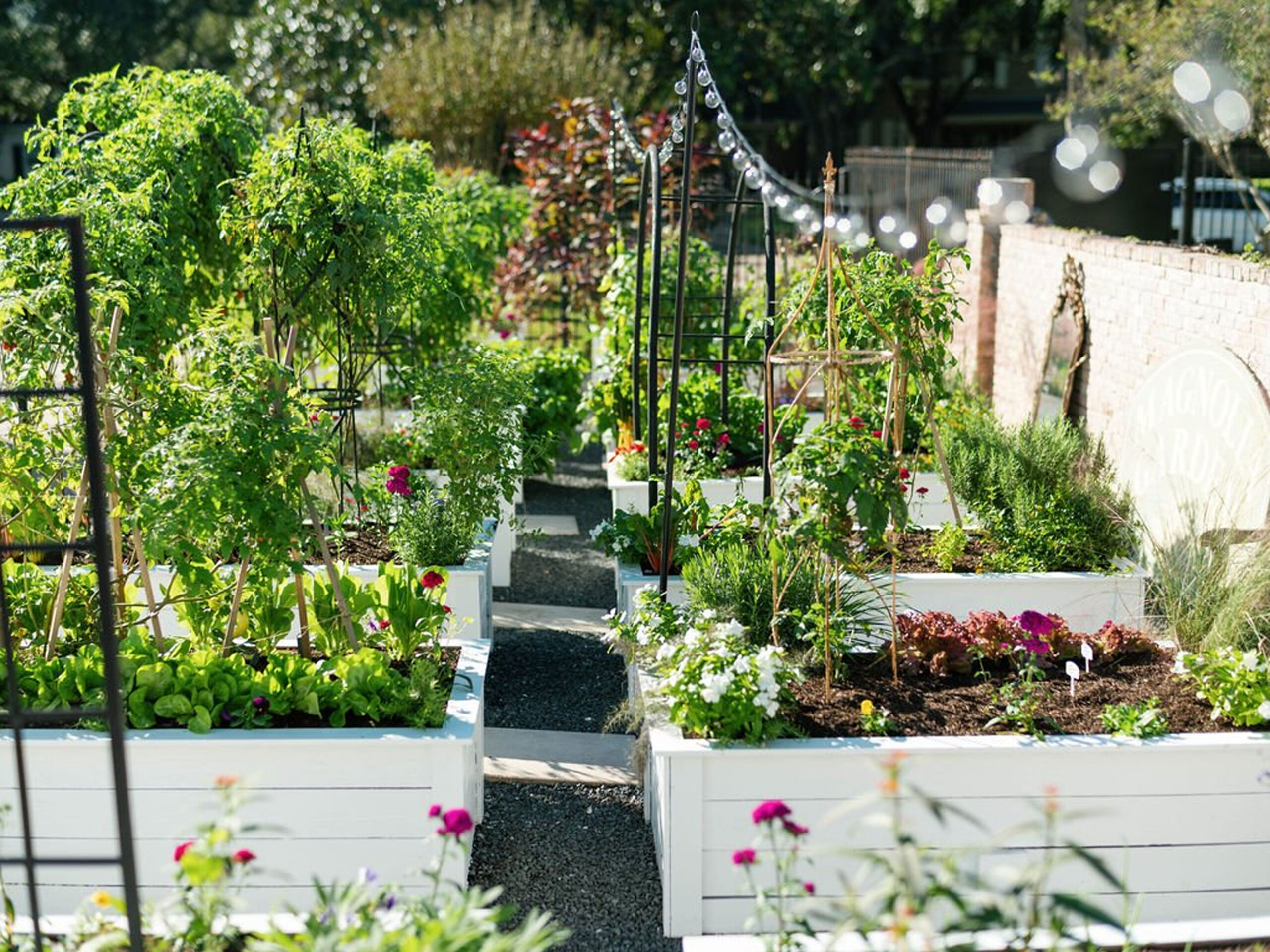
Choosing appropriate vegetables is crucial for your first-year success with raised bed vegetable gardening. Some vegetables are remarkably forgiving, thriving even with minor mistakes, while others demand precise conditions. For your initial raised bed garden, focus on proven performers that deliver both reliability and satisfaction.
Tomatoes are an excellent starting choice and perhaps the most rewarding. Cherry tomatoes, in particular, produce abundantly with minimal fuss. Peppers—both sweet bell peppers and hot varieties—are similarly forgiving and productive. Zucchini and summer squash grow so vigorously that beginning gardeners rarely face challenges; often the challenge is controlling their exuberance. Leafy greens like lettuce, spinach, kale, and chard are fast-growing, compact, and perfect for small raised bed gardens. These crops are ready to harvest in weeks rather than months, providing quick gratification.
Other beginner-friendly vegetables suitable for raised bed vegetable gardening include green beans, peas, radishes, carrots, beets, and cucumbers. Herbs like basil, parsley, and oregano thrive in raised beds and provide endless culinary benefits. Carrots and beets add visual interest and teach valuable lessons about succession planting and harvest timing.
When planning your raised bed garden layout, taller plants like tomatoes and peppers should be positioned on the northern side where they won’t shade shorter companions. Use the “square foot gardening” method popularized by Mel Bartholomew: divide your bed into a grid of one-by-one-foot squares and follow recommended plant spacing for each variety. This system maximizes productivity while ensuring adequate air circulation.
Watering Strategies for Your Raised Bed Vegetable Garden
Consistent, appropriate watering is foundational to success with raised bed vegetable gardening. Unlike traditional gardens, raised bed gardens typically dry out faster due to increased drainage and air exposure around the sides. Establishing proper watering habits prevents the stress that leads to disease, poor yields, and disappointing harvests.
Most vegetables in a raised bed garden need approximately one to two inches of water weekly, delivered through one to three watering sessions depending on temperature, humidity, and rainfall. Morning watering is ideal, allowing foliage to dry quickly and reducing fungal disease risk. Water deeply enough that moisture penetrates throughout the soil depth, encouraging deep root development that improves plant resilience.
Several watering methods work well for raised bed vegetable gardens. Soaker hoses deliver water directly to the soil, minimizing evaporation and preventing leaf moisture that attracts disease. Simply coil a soaker hose throughout your bed and connect it to a regular faucet or timer for effortless automated watering. Drip irrigation systems offer similar benefits with more precision; these systems use emitters or tubing to deliver water precisely where needed.
Hand watering remains viable for small raised bed gardens, though it demands consistency and attention. Use a watering wand or gentle spray to deliver water at soil level, avoiding wet foliage. Olla pots—unglazed clay pots buried in soil that slowly release water—provide a passive watering solution particularly valuable in arid climates. Automatic watering systems are worth considering if you frequently travel or have limited time for gardening. These systems eliminate guesswork and ensure your vegetables never suffer drought stress.
Mulching significantly improves water retention in your raised bed garden. A two to three-inch layer of organic mulch like straw, shredded leaves, or wood chips covers the soil, reducing evaporation by thirty to fifty percent while also suppressing weeds, moderating soil temperature, and gradually improving soil structure as it decomposes.
Fertilizing and Maintaining Soil Health in Raised Beds
Healthy soil is the foundation of thriving vegetables in your raised bed vegetable garden. While you started with quality soil, nutrients gradually deplete as plants feed. Regular replenishment maintains productivity and plant health. Fortunately, soil maintenance in raised bed gardens is simpler than in traditional gardens thanks to your controlled environment.
Incorporate two to three inches of compost or well-rotted manure into the top layer of your raised bed garden each spring before planting. This addition supplies essential nutrients, improves soil structure, and feeds beneficial microorganisms. Compost is the single most important amendment for ongoing raised bed garden health and should be an annual ritual.
Midseason feeding supports heavy feeders like tomatoes, peppers, and squash. Apply balanced fertilizer (such as a 10-10-10 NPK formula) monthly during active growth, following package directions for your raised bed garden size. Many organic gardeners prefer fish emulsion, seaweed extract, or diluted compost tea applied every two to three weeks. These liquid feeds are gentle, fast-acting, and improve overall soil health.
Crop rotation—even on a small scale—prevents nutrient depletion and reduces pest buildup in your raised bed vegetable garden. Divide your planted area into three zones, rotating plant families through different locations each season. For example, if you grew tomatoes (Solanaceae family) in zone one this year, plant legumes (beans or peas) there next year, followed by leafy greens the third year. This practice dramatically improves long-term productivity and health of your raised bed garden.
Monitoring soil pH helps optimize nutrient availability. Most vegetables prefer slightly acidic soil around 6.0 to 7.0 pH. Simple test kits or professional soil testing reveal your soil’s pH, and amendments like lime (to raise pH) or sulfur (to lower it) make corrections. Annual soil testing of your raised bed garden is an excellent investment in ongoing success.
Pest and Disease Management for Raised Bed Vegetable Gardening
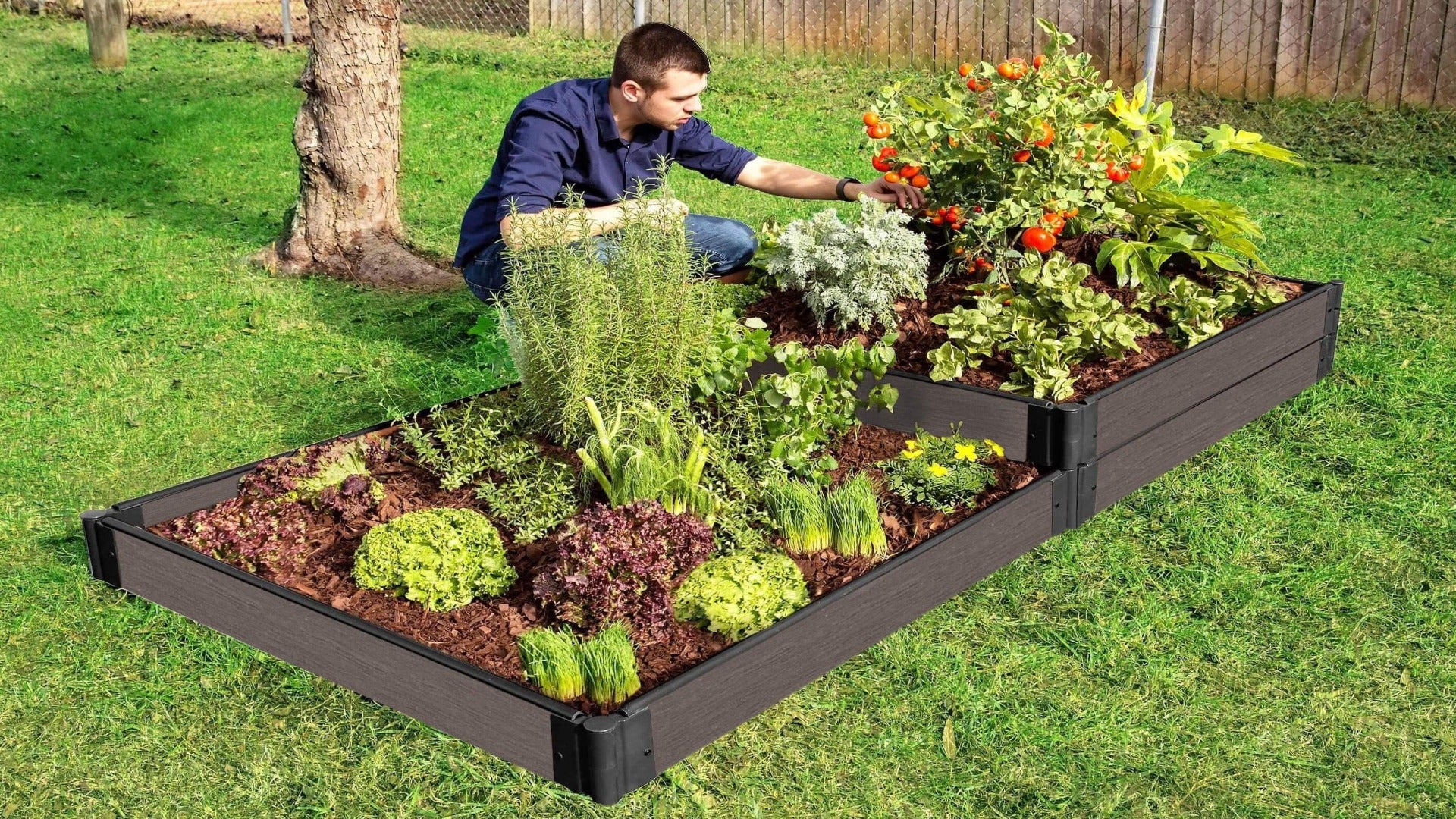
While raised bed gardens naturally discourage many pests through elevation, challenges inevitably arise. Integrated pest management (IPM) principles—combining cultural practices, biological controls, and targeted interventions—provide effective solutions aligned with organic gardening principles.
Common pests affecting raised bed vegetables include aphids, spider mites, caterpillars, and beetles. Hand-picking remains effective for many pests; simply remove visible insects daily. Row covers protect young plants from flying insects while allowing light penetration and water passage. These lightweight fabrics are draped over plants and secured around your raised bed garden perimeter until flowering begins and pollination is necessary.
Companion planting harnesses natural insect relationships to protect your raised bed vegetable garden. Marigolds repel certain pests, while basil deters flies and mosquitoes. Nasturtiums act as sacrificial plants, attracting pests away from vegetables. Beneficial insects like ladybugs, lacewings, and parasitic wasps suppress pest populations naturally. Attract these allies by planting flowers like alyssum, sunflowers, and yarrow near your raised bed garden.
Fungal and bacterial diseases like powdery mildew, early blight, and damping-off cause frustration in raised bed vegetable gardens. Prevention is most effective: ensure adequate air circulation, water at soil level (avoiding wet foliage), remove diseased leaves promptly, and practice crop rotation. Organic fungicides like sulfur dust or neem oil provide treatment options when prevention fails. Some diseases require removing affected plants entirely to prevent spread in your raised bed garden.
Regular monitoring of your raised bed vegetable garden allows early detection and intervention. Scout plants every few days for pest or disease signs. Catch problems early when solutions are simplest and most effective.
Harvesting and Extending Your Raised Bed Garden Season
The moment you began your raised bed vegetable gardening journey, you anticipated this reward: harvesting fresh vegetables from your garden. Timing and technique significantly impact flavor, nutrition, and future productivity of your vegetable bed.
Most vegetables taste best when picked at peak ripeness—not overmature. Tomatoes develop best flavor when fully ripe but still firm. Zucchini and summer squash are most tender when six to eight inches long. Leafy greens are most delicate when young. Pick frequently and consistently: harvesting encourages additional production. A plant that never sets large seed heads keeps producing new growth and flowers continuously, extending your harvest from your raised bed vegetable garden over months.
Succession planting—sowing new seeds every two to three weeks—provides continuous harvests rather than feast-or-famine cycles. As early plantings mature and produce, plant new seeds in any available space. This technique maximizes productivity from your raised bed garden and ensures fresh vegetables throughout the season.
Fall gardening extends your raised bed vegetable garden’s productive season dramatically. Hardy crops like kale, spinach, chard, beets, and radishes thrive in cool fall weather, often tasting sweeter after light frosts. Direct-seed cool-season crops in late summer for fall harvest in your raised bed garden. Use shade cloth in early fall to gradually acclimate young plants to cooler temperatures, improving establishment.
Season extension techniques like cold frames, row covers, or low plastic tunnels protect delicate plants from early frosts, prolonging your raised bed vegetable garden season by weeks or even months. These simple structures trap heat, maintain moisture, and shield plants from wind damage, dramatically improving fall and early spring productivity.
Also Read: The Top Gardening Trends to Watch in 2025
Conclusion
Starting a raised bed vegetable garden is an achievable, rewarding endeavor that provides fresh produce, physical activity, connection to nature, and genuine satisfaction regardless of your experience level. By selecting an appropriate sunny location, constructing or purchasing a suitable bed structure, filling it with quality soil, choosing beginner-friendly vegetables, establishing consistent watering routines, maintaining soil health through annual compost additions, managing pests organically, and harvesting strategically, you’ll create a thriving raised bed garden that produces abundantly throughout the growing season and potentially beyond.
Your first year may involve learning curves and minor disappointments, but these experiences build knowledge that transforms subsequent seasons into increasingly successful endeavors. Whether you’re growing for food security, environmental consciousness, or the simple joy of gardening, your raised bed vegetable garden will deliver returns far exceeding your initial investment. Begin small if you’re uncertain, but begin now—your future self will thank you for starting this journey toward fresher, more nutritious homegrown vegetables in 2025.



